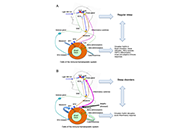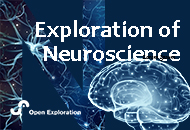3 results in Exploration of Neuroscience
Latest
Sort by :
- Latest
- Most Viewed
- Most Downloaded
- Most Cited
Open Access
Review
Circadian regulation of the immune-hematopoietic system
Georges Maestroni
Published: June 30, 2023 Explor Neurosci. 2023;2:123–139
This article belongs to the special issue Circadian Rhythm and Melatonin

Open Access
Review
Therapeutic potential of extracellular vesicles in Parkinson’s disease
Michelli Ramires Teixeira ... Rodrigo Pinheiro Araldi
Published: June 29, 2023 Explor Neurosci. 2023;2:106–122

Open Access
Perspective
Mesenchymal stem cell stroke therapy: current limitations in its clinical translation
Ylenia Pastorello, Mark Slevin
Published: June 28, 2023 Explor Neurosci. 2023;2:98–105

Journal Information